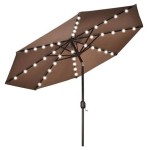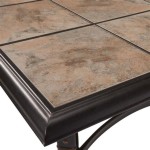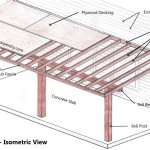Why Is My Patio Heater Not Working?
Patio heaters, like any other appliance, are prone to malfunctions. If your patio heater isn't working as expected, troubleshooting the issue can feel daunting. However, by systematically checking common causes, you can often identify and resolve the problem yourself, saving time and money. This article will explore the most common reasons why your patio heater might be malfunctioning and provide practical steps to address them.
1. Check the Power Supply
The most basic reason for a non-functioning patio heater is a power issue. Before diving into more complex troubleshooting, ensure the heater is properly connected to a power source. Here are some steps to take:
- Verify the Power Switch: Ensure the switch on the heater is turned on. It might seem obvious, but it's easy to overlook in the troubleshooting process.
- Inspect the Power Cord: Check the power cord for any fraying, damage, or loose connections. Replace a damaged cord immediately.
- Test the Outlet: Plug another device into the outlet to confirm power is flowing. If the other device works, the outlet is likely not the issue.
- Check the Circuit Breaker: If the outlet is functioning but the heater remains off, check if the corresponding circuit breaker has tripped. Reset the breaker if necessary.
If the power supply is confirmed to be working, move on to other potential issues.
2. Inspect the Gas Supply (For Gas Heaters)
For gas patio heaters, a lack of gas supply is a common reason for malfunction. Check the following:
- Gas Tank Level: Ensure there is enough propane or natural gas in the tank. You may need to refill the tank or check your gas line connection.
- Gas Valve: Make sure the gas valve is open. The valve is typically located on the tank or gas line.
- Gas Line: Inspect the gas line for any leaks, blockages, or damage. You may need to contact a qualified technician for repairs.
- Pilot Light: For heaters with pilot lights, ensure the pilot light is lit. If the pilot light is out, follow the instructions provided by the manufacturer to relight it.
If the gas flow is confirmed to be adequate, continue troubleshooting the electrical components.
3. Troubleshoot Electrical Components
Patio heaters often utilize igniters, thermostats, and other electrical components that can malfunction. Here are some troubleshooting steps for these components:
- Igniter: Check the igniter for signs of damage or wear. The igniter can be visually inspected, and you can test its function by attempting to light the heater. If the igniter fails to spark, you may need to replace it.
- Thermostat: The thermostat controls the heater's temperature. Inspect the thermostat for any damage or wear. You can test its functionality by manually adjusting the temperature setting. If the heater does not respond to changes in the thermostat setting, the thermostat may need to be repaired or replaced.
- Wiring: Inspect the wiring for any loose connections, frayed insulation, or damage. If any wiring issues are found, it's important to contact a qualified electrician for repairs.
- Safety Sensors: Some heaters have safety sensors, such as tip-over switches or flame sensors, that shut down the heater if they detect a problem. Check if any of these sensors have tripped and reset them if necessary.
If all of the above troubleshooting steps have been exhausted and the patio heater still isn't working, it may be time to contact a qualified appliance technician for assistance. They can diagnose the problem and recommend the appropriate repair or replacement.

Patio Heater Not Working

Why Is My Patio Heater Not Igniting Patiooutside Com

How To Fix A Tall Patio Heater That Won T Light Solved

Patio Heater Quick Fix Common Problems And Solutions

Grandma Quickly Fixes Propane Heater That Won T Stay Lit

Why Is My Gas Heater Not Igniting

Patio Heater Troubleshooting Guide Common Issues Fixes

Patio Heater Pilot Wont Light Or Stay Lit Repair And Clean

My Patio Heater Won T Stay Lit What To Do About It

Patio Heater Troubleshooting Guide Common Issues Fixes








